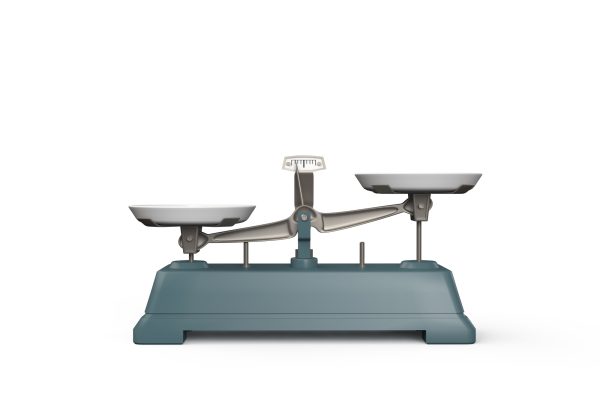This is Still Not Stagflation
By Dr. JoAnne Feeney, Portfolio Manager
Some of you may have had flashbacks to the late 1970s when you saw the latest CPI inflation report last week. At a 6.8% year-over-year increase, US consumer prices have not risen that rapidly in nearly 40 years. Even excluding the more volatile energy and food components, the U.S. saw Core CPI rise 4.9%. Moreover, the shortages driving inflation ever higher appear unlikely to ease anytime soon, and we are only starting to see rising housing costs filter into measured inflation figures. Core inflation could get worse before it gets better, even if the headline pace drops with lower energy prices, as seems likely. Investors worry that inflation itself, and the response of the Federal Reserve, may spoil prospects for continued appreciation in equities, but a deeper look suggests attractive opportunities for equity investing remain firmly in place, although positioning for higher inflation risks is needed.At the heart of rising prices is simply lots of demand and too little supply. A quick reminder—this is still not anything like the stagflation we saw in the 1970s-80s. The US economy is growing very robustly – just not enough to meet all that demand. That growth is a plus for company sales and profits (and so for equities), and it is widely understood that year-over-year growth will slow in 2022. The growth rate of 2021 is simply too high to be sustainable and reflects abnormally low production in 2020, yet growth in 2022 appears likely to remain above trend as supply chains continue to recover. Rising employment and strong household balance sheets support spending, but supply increases have been limited by COVID, related shutdowns, and supply chain bottlenecks. Moreover, the shortage of labor, after many left the workforce during the worst of the pandemic and have stayed out, is driving up wages and this is feeding into prices. Yet despite this, many companies—but not all—are finding that consumers are willing to pay higher prices and so are maintaining record profit margins.
Investors and policy officials, however, wonder for how long companies and consumers can manage a high inflation environment. If the Fed can take some of the pressure off prices by encouraging consumers to defer spending for a while—just until supply can catch up—it could deliver that elusive “soft landing” wherein growth remains robust, incomes continue rising, unemployment falls, and inflation returns to more normal levels. That may be a very tall order.
The fundamental solution to high inflation—beyond Fed tightening—is for supply to catch up to demand. We are seeing some easing in shortages in semiconductors, for example, as automakers finally have all their North American plants operational again. But more broadly, labor shortages may limit the pace of supply growth, even as other material and component shortages abate. Last week’s reported unemployment claims hit a low not seen since 1969 (and U.S. population has grown more than 50% since then). Job Openings continue to climb, but Quits remain stubbornly high as workers job hop to take better paying jobs, and this makes it hard for firms to make much headway in filling positions.
One outlet for excess U.S. demand has often been through higher imports. The bottlenecks at two of the country’s largest ports, in LA and Long Beach, had appeared to be easing. Fewer ships were lined up to be unloaded. It looked as though transportation networks were getting better at unloading ships, distributing their goods to warehouses, and delivering all that stuff to consumers. Turns out very little has changed at the ports, except the location of many of those waiting ships. They are now simply parked farther out to sea, out of the range of those doing the counting. Port watchers are now saying we have not even reached the peak of port backups, let alone started to see those bottlenecks ease. The pileup at our ports indicates that demand remains robust (a plus for equities) although also suggests we are unlikely to see much easing of inflationary pressures via imports until well into 2022.
The Fed will try to dampen demand by tapering and raising rates, since supply is pretty much beyond its control, but low global interest rates may, unfortunately, limit the Fed’s ability to move U.S. rates higher. While this would leave inflation running above target for much longer than desired, it would also reflect firms continuing to sell into a very strong demand environment. It appears we are destined either to live with higher inflation or higher interest rates, and likely, a combination of the two for the foreseeable future. The implication for equity investing is to build portfolios accordingly to balance those risks—some real estate, financial, and energy companies, and certain secular growth companies that can offer an inflation hedge or thrive in a higher inflation and rate world.
The foregoing content reflects the opinions of Advisors Capital Management, LLC and is subject to change at any time without notice. Content provided herein is for informational purposes only and should not be used or construed as investment advice or a recommendation regarding the purchase or sale of any security. There is no guarantee that the statements, opinions or forecasts provided herein will prove to be correct. Past performance may not be indicative of future results. Indices are not available for direct investment. Any investor who attempts to mimic the performance of an index would incur fees and expenses which would reduce returns. Securities investing involves risk, including the potential for loss of principal. There is no assurance that any investment plan or strategy will be successful.






LATEST ARTICLES